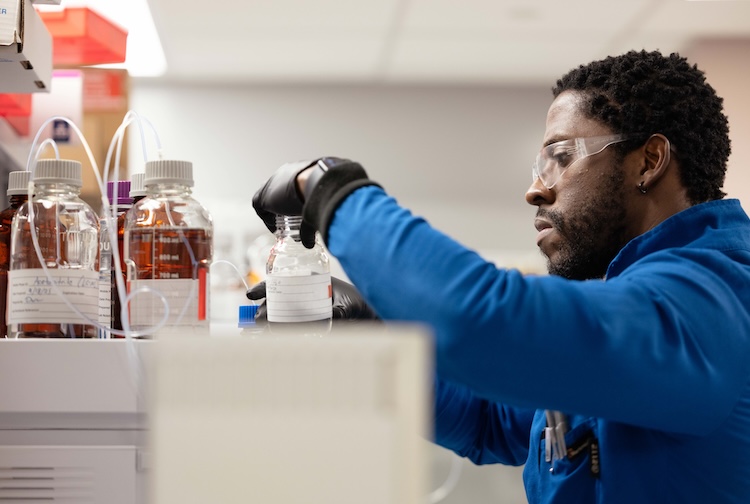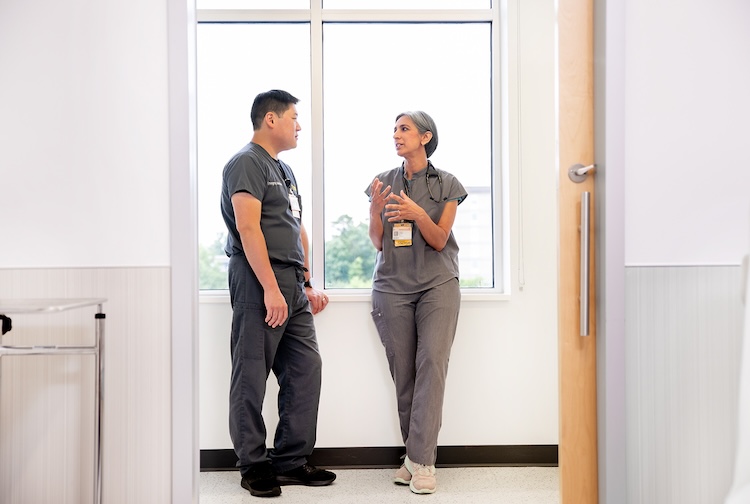There's a new COVID-19 variant, but what makes it different?
There are many unknowns about this new Omicron subvariant, but its accelerated spread has made it noteworthy to scientists and medical professionals.
January 09, 2023 Dr. Gonzalo Bearman, VCU Health's infectious disease expert, in the Coronavirus Command Center in early March before April 3rd CDC mask wearing recommendations. (VCU Enterprise Marketing and Communications)
Dr. Gonzalo Bearman, VCU Health's infectious disease expert, in the Coronavirus Command Center in early March before April 3rd CDC mask wearing recommendations. (VCU Enterprise Marketing and Communications)
By Sara McCloskey
A new mutation of the coronavirus is spreading rapidly across the United States.
XBB.1.5 began its rise in early December, initially making up about 4% of newly diagnosed COVID-19 cases. By the beginning of January, federal health data shows 40% of cases are connected the new Omicron subvariant nationally.
While scientists at the World Health Organization (WHO) warn XXB.1.5 may be more contagious than other COVID-19 variants, there are still many unknowns about this emerging new illness.
To learn more about XXB.1.5, we spoke with VCU Health's infectious disease expert Gonzalo Bearman, M.D.
What do we know so far about XBB.1.5?
The current data suggests that the new variant may be more transmissible, but we do not know if it makes people severely ill.
It is also too soon to tell whether the current vaccines and treatments are less effective for this variant. However, we believe, the bivalent booster has some activity against the new viral variant.
It feels like every few months, we hear about a new type of COVID-19. How do new variants and subvariants form?
Variants form when there is ongoing virus spreading and replicating itself in the community. This leads to errors -- or changes -- in replication, causing a mutation in the genetic material of the virus. The result is the creation of a new variant.
How does this new variant change the potential impacts to our community with the so-called tridemic, which is the increased spread of several illnesses including influenza (flu), respiratory syncytial virus (RSV) and COVID-19?
The new variant may result in a greater number of COVID-19 cases, which will increase the total count of viral respiratory infections in the community. If community members do not take the proper precautions, this increase in illness could potentially overwhelm hospitals and healthcare systems.
Additionally, not everyone needs to go to the hospital if they are sick with a respiratory illness - many symptoms can be treated at home.
What are some things we should be doing to protect themselves from this new variant?
Many of the lessons we learned during the beginning of the COVID-19 pandemic still apply, not only for this new variant but for all illnesses that tend to pop up during the winter months. This includes washing your hands frequently, covering your mouth when you cough or sneeze and staying home if you feel sick.
If you have not done so yet - get vaccinated and get the bivalent booster. If you or a loved one are high risk of getting sick, avoid crowded indoor areas and wear a facemask to protect yourself and others.




